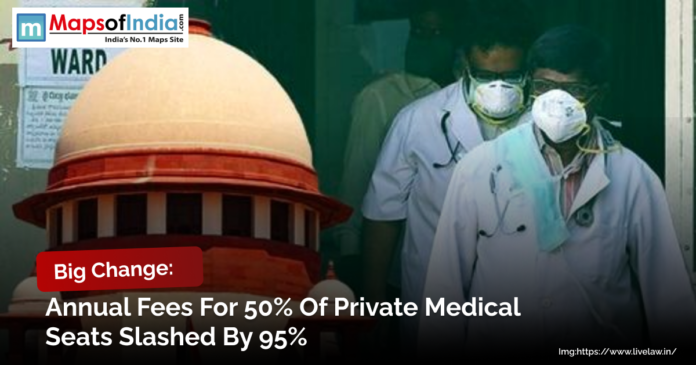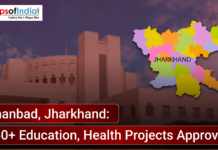In another revolutionary decision to ensure that medical education becomes affordable and accessible to a greater number of citizens, the National Medical Commission (NMC) has introduced a superlative policy that has slashed the annual fee by half for 50 per cent of seats of all private and deemed private medical colleges in India. The new guidelines have also increased the fees of half of the total seats in these institutions to the level of the fees of government medical colleges in a similar state or Union Territory. The move is likely to help thousands of new doctors who could not afford to get into medicine because of high costs in the private sector.
The move is a huge relief to deserving students belonging to the financially weaker groups who, despite qualifying in competitive exams like NEET, were not able to avail government seats and had to drop out of higher studies due to the inability to pay in private colleges. In a majority of institutions, the fee for medical colleges was between 10 lakh and 25 lakh per year, which was a very high financial cost imposed on families. And with the new financial infrastructure now established, such fees may be reduced by up to 90 to 95 per cent, state by state, bringing a privately funded MBBS education almost on par with those of the government institutions in cost.
This grand reform will be a sea change in the higher education policy of India and will help to bring in more equity and parity in access to medical education. Even though government colleges have remained the most economical alternative, they are characterized by a scarcity of places, which creates a lot of competition. Most private medical colleges have traditionally been unaffordable to a majority of people because of the tuition expenses. This was a major difference that caused students to acquire large sums of loans or even go to other countries to study medicine at a lower cost. The employment drive will not only address the affordability issue, but it will also assist in maintaining talent at home.
The policy the new regulation covers is that, under it, the proportional seats of reduced fees will be distributed by merit, strictly with centralized counseling. This helps to be sure that those students who deserve to enter despite their financial statuses. The 50 per cent seats in the institutions and colleges with management quota will remain in existence, but the re-allocation of 50 per cent of the total seats on subsidized fees will be a serious move towards accessibility.
The decision has been hailed by many state authorities as it moves towards the right direction towards achieving social justice within the education sector. However, other privately owned hospitals raise concerns about the possible financial burden by stating that it can affect the quality of services and infrastructure unless it is compensated through government assistance or changes in policies. Nonetheless, the overall feeling is still quite positive, with most of the parents and students praising the reform.
This action will not only reform the economics of medical education but also enthuse other sectors of professional education to reflect the same kind of reform. In the meantime, future physicians nationwide are rejoicing over the possibility of fairer times as far as medical education is concerned. The government has made a strong decision to democratizing education in one of the most essential industries, which is the healthcare industry, by lowering the financial costs of entering the industry.










